Thingiverse

Laser measuring device for the sharpening angle of knives by Zefram_Cochrane
by Thingiverse
Last crawled date: 3 years, 1 month ago
Laser measuring device for the sharpening angle of knives
Since Thingiverse does not offer proper formatting solutions for texts or the possibility to enter formulas I recommend all those who want to learn more about the background to visit my website.: www.science-feles.de.
I would be very happy about a Tip.
Introduction
In addition to the steel alloy, the grinding angle of the blade is decisive for the sharpness and service life of a knife blade. The smaller the angle, the thinner the blade can be ground and the sharper it is. However, this significantly reduces the time in which the knife is sharp. The material removal is higher, it is easier to break pieces from the blade and it becomes chipped and the fine phase bends and must be straightened again. The greater the angle, the longer the service life, greater is the robustness but significantly less is the sharpness of the blade.The sharpening angle depends exclusively on the alloy of the steel and is selected by the manufacturer of the knife based on this. Steel with a high carbon content will have a correspondingly smaller grinding angle than a stainless steel blade. Each knife has an individually calculated angle that must be maintained.
My measuring principe
When light hits a smooth surface with low surface roughness, such as a metallic knife blade, the light beam is reflected back in a directional reflection based on the law of reflection. The angle of incidence (δ) of the incident light beam is equal to the angle of reflection (δ') of the reflected beam. Both lie on the same plane of incidence.
If the knife is lying on its back with the blade pointing upwards and a laser beam shines exactly perpendicular to the blade, the light beam is split. It is reflected depending on the sharpeningangle of the blade. If it is a double beveled knife edge, two reflection points will be created mirror symmetrically. With single beveled knife edges, one reflection point will be asymmetrical to the other. The width of the two projected points indicates whether the blade was ground evenly, flat, concave or convex. Ideally, only two clearly defined points should be visible.
Trigonometry
The distance between the reflection point and the mirror axis provides information about the grinding angle of the knife. The greater the distance, the greater the angle.
To calculate the angle, we need two pieces of information. The exact distance between the reflection points to the mirror axis, and the perpendicular distance from the reflection surface to the knife blade. Using these two values (a and b), the side c can be calculated via the Pythagorean theorem (Fig). By means of the cosine rule the angle α at the reflection point R (Fig 2) between the sides c and b can be calculated. The actual grinding angle of the knife is equal to the angle bisector here. I made a small sheet in Excel to simplify the calculations.
Printing the measurement setup
I have designed and 3D-printed a holder for simple kitchen knives with a small blade in order to be able to reproducibly determine the grinding angle with exact values. For this, the blade is simply clamped, the laser inserted and the reflection projected onto a sheet of paper. I use a simple and cheap violet laser with a diameter of 13.3 mm. Then, only the distance between the sheet of paper and the blade as well as projection points must be measured and entered into the formula.
I'm still working on the design of the holder so that larger knives can fit in it.
Ceterum censeo martem esse abeundum.
Since Thingiverse does not offer proper formatting solutions for texts or the possibility to enter formulas I recommend all those who want to learn more about the background to visit my website.: www.science-feles.de.
I would be very happy about a Tip.
Introduction
In addition to the steel alloy, the grinding angle of the blade is decisive for the sharpness and service life of a knife blade. The smaller the angle, the thinner the blade can be ground and the sharper it is. However, this significantly reduces the time in which the knife is sharp. The material removal is higher, it is easier to break pieces from the blade and it becomes chipped and the fine phase bends and must be straightened again. The greater the angle, the longer the service life, greater is the robustness but significantly less is the sharpness of the blade.The sharpening angle depends exclusively on the alloy of the steel and is selected by the manufacturer of the knife based on this. Steel with a high carbon content will have a correspondingly smaller grinding angle than a stainless steel blade. Each knife has an individually calculated angle that must be maintained.
My measuring principe
When light hits a smooth surface with low surface roughness, such as a metallic knife blade, the light beam is reflected back in a directional reflection based on the law of reflection. The angle of incidence (δ) of the incident light beam is equal to the angle of reflection (δ') of the reflected beam. Both lie on the same plane of incidence.
If the knife is lying on its back with the blade pointing upwards and a laser beam shines exactly perpendicular to the blade, the light beam is split. It is reflected depending on the sharpeningangle of the blade. If it is a double beveled knife edge, two reflection points will be created mirror symmetrically. With single beveled knife edges, one reflection point will be asymmetrical to the other. The width of the two projected points indicates whether the blade was ground evenly, flat, concave or convex. Ideally, only two clearly defined points should be visible.
Trigonometry
The distance between the reflection point and the mirror axis provides information about the grinding angle of the knife. The greater the distance, the greater the angle.
To calculate the angle, we need two pieces of information. The exact distance between the reflection points to the mirror axis, and the perpendicular distance from the reflection surface to the knife blade. Using these two values (a and b), the side c can be calculated via the Pythagorean theorem (Fig). By means of the cosine rule the angle α at the reflection point R (Fig 2) between the sides c and b can be calculated. The actual grinding angle of the knife is equal to the angle bisector here. I made a small sheet in Excel to simplify the calculations.
Printing the measurement setup
I have designed and 3D-printed a holder for simple kitchen knives with a small blade in order to be able to reproducibly determine the grinding angle with exact values. For this, the blade is simply clamped, the laser inserted and the reflection projected onto a sheet of paper. I use a simple and cheap violet laser with a diameter of 13.3 mm. Then, only the distance between the sheet of paper and the blade as well as projection points must be measured and entered into the formula.
I'm still working on the design of the holder so that larger knives can fit in it.
Ceterum censeo martem esse abeundum.
Similar models
3dwarehouse
free

Knife Sharpening Jig
...knife sharpening jig
3dwarehouse
super accurate knife sharpening jig to make knives razor sharp
3dwarehouse
free

knife blade with full tang
...4mm thick blade nearly 1' wide, 4 3/4' long, 8 3/8' overall. careful, it's sharp. #blade #clip_point #knife #tang
thingiverse
free

Knife Sharpening Guide | Arca Acuta by smgill
...ure to read the instructions in the section headed, "how do i use it?" i hope this is as useful to you as it was to me.
3dwarehouse
free

Flamberge
...the medieval times. #blade #bladed #blades #edge #edged #flamberge #knife #knives #long #sharp #sharpened #sword #weapon #weapons
thingiverse
free

Angle Guide for Shapening Steel by CNCKitchen
...arpening steels with a diameter of 14mm.
this will help you to hold the perfect blade angle when sharpening your precious knifes.
grabcad
free

Laser liner - UMAREX
...r - umarex
grabcad
- a simple device to measure distances , areas and volumes based on ultrasonic beam and laser beam reflection
grabcad
free

Knife Sharpener
...bles-with-a-fastened-wire-clamp-on-the-knife-blade-1
the model is available as a step file (.stp) of the complete assembly only.
cg_trader
$10

Yinxiang Knife
...nifes knive knives weapon coldweapon whitearm blade steel sharp chrome bladed weapon cutting handle various models various models
3dwarehouse
free

compass range finder MK1
...se
finds the range of two targets and calculates the distance between them using the pyth therum #laser #measuring #range_finder
thingiverse
free

Sharpening Guide for 6" Ryobi Bench Grinder by n7jti
...of the shaft and hold my blade level with the ground and grind on the wheel on that line. (pictures added) works like a champ!
Zefram
thingiverse
free

Arduino Holder by zefram
...older by zefram
thingiverse
holder for the smaller arduino boards, leonardo, uno etc... stl and step files are in the downloads.
thingiverse
free

Scanner Booth by zefram
...scanner booth by zefram
thingiverse
scanner booth made from laser cut acrylic sheets and 3d printed abs blocks.
thingiverse
free

Zefram Cochrane by stanojoski
...first contact. i looked for it but didn't find it, so here it is.. i tried my best. i hope you love it and share your prints.
thingiverse
free
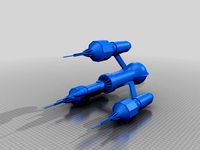
Liberator by zefram
...akes 7. the finished model is 435mm (17 inches) long. the biggest part is about 110mm, so should fit on a lot of common printers.
thingiverse
free
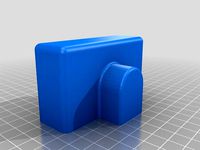
Playstation Eye Cover by zefram
...playstation eye cover by zefram
thingiverse
a plastic cap that covers the playstation eye camera when it is not in use.
thingiverse
free

Square Gears for 3D Printing by zefram
...square gears for 3d printing by zefram
thingiverse
copy of square gears, made into an stl file for printing.
thingiverse
free

Boe-Bot Stand by zefram
...giverse
stand to support the parallax boe-bot robot, while you are testing programs, holds the robot with wheels off the ground.
thingiverse
free

Tamiya Paint Stand Extension by zefram
...nd extension by zefram
thingiverse
this is an extension for the tamiya paint stand, it adds a tier to hold an additional 5 pots.
thingiverse
free

Travel Tic-Tac-Toe by zefram
...c-tac-toe by zefram
thingiverse
a tic-tac-toe game where you can't lose the pieces!
stl and step files are in the downloads.
thingiverse
free
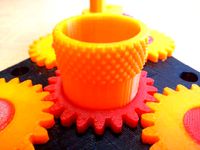
Knurled Center Knob for Napier Deltic Engine Model by zefram by ryonsherman
...ram's napier deltic engine model inspired by the build by 3gng.
the gear includes a knurled knob to allow for easy operation.
Cochrane
3d_export
$50

ironclad frigate cochrane 3d
...ironclad frigate cochrane 3d
3dexport
design_connected
$7

Cale & Brady
...cale & brady
designconnected
q collection cale & brady stools computer generated 3d model. designed by anthony cochran.
3d_export
$60

Norton Commando 850 3D Model
...hopper rebel jukebox cochran young james british harley indian twin cc speed
norton commando 850 3d model gonzo_3d 21370 3dexport
thingiverse
free

Zefram Cochrane by stanojoski
...first contact. i looked for it but didn't find it, so here it is.. i tried my best. i hope you love it and share your prints.
thingiverse
free

Electronic housing for Cochrane ringlight by Zefram_Cochrane
...the lab: cochrane lab designs.
housing for the electronics of my microscope ringlight. https://www.thingiverse.com/thing:4842732
thingiverse
free
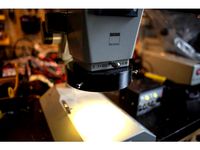
Cochrane Ringlight for microscopes by Zefram_Cochrane
...e illumination of the sample to be able to improve the contrast by targeted shadow casting.
ceterum censeo martem esse abeundum.
thingiverse
free

Cochrane 60 mm hotend cooler for Ender 3 with BlTouch by Zefram_Cochrane
...y smaller resulting in a smoother measuring point.
the clamp on the right side is reinforced
ceterum censeo martem esse abeundum.
thingiverse
free

Microscope eyepiece protection cap by Zefram_Cochrane
... the lab: cochrane lab designs.
visit my website for more information: www.science-feles.de.
i would be very happy about a tip.
thingiverse
free

Funway 1 "Project Board"
...has been unchanged for several years now (last item listed in project milestones is november 2016) https://funwayelectronics.com/
grabcad
free

Ryan Cochran
...ryan cochran
grabcad
gcxszf
Knives
3d_export
$5

knives
...knives
3dexport
3 knives
archibase_planet
free

Knives
...knives
archibase planet
knife knives kitchen ware
knives gipfel n170211 - 3d model (*.gsm+*.3ds) for interior 3d visualization.
turbosquid
$10

Knive
...quid
royalty free 3d model knive for download as max and obj on turbosquid: 3d models for games, architecture, videos. (1278438)
turbosquid
$30

knives
... available on turbo squid, the world's leading provider of digital 3d models for visualization, films, television, and games.
turbosquid
$20
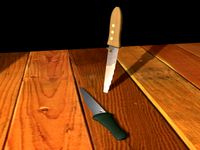
Knives
... available on turbo squid, the world's leading provider of digital 3d models for visualization, films, television, and games.
turbosquid
$15

KNIVE
... available on turbo squid, the world's leading provider of digital 3d models for visualization, films, television, and games.
turbosquid
$11
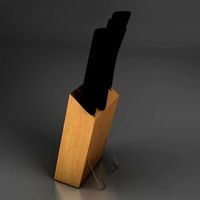
Knives
... available on turbo squid, the world's leading provider of digital 3d models for visualization, films, television, and games.
turbosquid
$5

knives
... available on turbo squid, the world's leading provider of digital 3d models for visualization, films, television, and games.
turbosquid
$3

knive
... available on turbo squid, the world's leading provider of digital 3d models for visualization, films, television, and games.
turbosquid
free

knives
... available on turbo squid, the world's leading provider of digital 3d models for visualization, films, television, and games.
Sharpening
turbosquid
$5

Sharpener
...
turbosquid
royalty free 3d model sharpener for download as on turbosquid: 3d models for games, architecture, videos. (1603397)
3d_export
$5

sharpener
...r is made in the compass 3d program, the rendering is made in the keyshot program. the model is saved in the stl, fbd, stl format
turbosquid
$19

Sharpener
... available on turbo squid, the world's leading provider of digital 3d models for visualization, films, television, and games.
turbosquid
$19

Sharpener
... available on turbo squid, the world's leading provider of digital 3d models for visualization, films, television, and games.
turbosquid
$19

Sharpener
... available on turbo squid, the world's leading provider of digital 3d models for visualization, films, television, and games.
turbosquid
$19

Sharpener
... available on turbo squid, the world's leading provider of digital 3d models for visualization, films, television, and games.
turbosquid
$19

Sharpener
... available on turbo squid, the world's leading provider of digital 3d models for visualization, films, television, and games.
turbosquid
$19

Sharpener
... available on turbo squid, the world's leading provider of digital 3d models for visualization, films, television, and games.
turbosquid
$19

Sharpener
... available on turbo squid, the world's leading provider of digital 3d models for visualization, films, television, and games.
turbosquid
$11

Sharpener
... available on turbo squid, the world's leading provider of digital 3d models for visualization, films, television, and games.
Laser
3d_export
$5
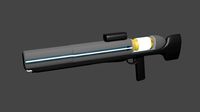
laser
...laser
3dexport
a 3d laser
3d_export
free

cnc 3dp laser nozzle for 2w laser opt lasers
...logy that gave birth to cutting and engraving laser heads this laser nozzle was designed for, read the article in the link below:
3d_export
free

cnc laser mount opt lasers
...eive the engraving and cutting laser heads this cnc machine laser mount was designed for, read the article on the following page:
turbosquid
$20
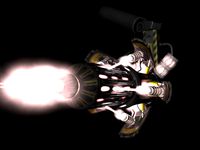
Laser
... available on turbo squid, the world's leading provider of digital 3d models for visualization, films, television, and games.
turbosquid
$15
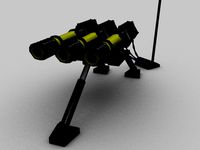
Laser
... available on turbo squid, the world's leading provider of digital 3d models for visualization, films, television, and games.
turbosquid
$3
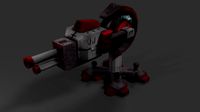
Laser
... available on turbo squid, the world's leading provider of digital 3d models for visualization, films, television, and games.
3d_export
$5

laser sword
...laser sword
3dexport
it is a blue laser sword with a metal frame
3d_ocean
$19

Laser Turret
...be used in any sf type of game, especially in tower defense games. - laser turret: 3025 polygons - props: 270 polygons - textu...
3d_export
free
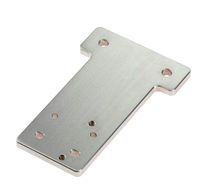
workbee cnc laser mount for opt lasers
...the specifications of engraving and cutting laser heads this mount was designed for, please take a look at the following website:
3d_export
free

shapeoko cnc laser mount for opt lasers
...ind out the opportunities that adding a cutting and engraving laser head to your cnc can bring, take a look at the website below:
Device
3ddd
$1

device
...device
3ddd
device
3ddd
$1

device
...device
3ddd
device
turbosquid
$25

Device
...royalty free 3d model device for download as ma, max, and obj on turbosquid: 3d models for games, architecture, videos. (1431298)
archive3d
free

Device 3D Model
...device 3d model
archive3d
equipment device
device- 3d model for interior 3d visualization.
archive3d
free
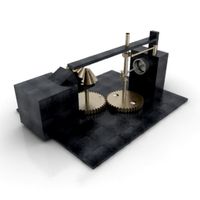
Device 3D Model
... model
archive3d
device
device n050608 - 3d model (*.gsm+*.3ds) for interior 3d visualization.
archive3d
free
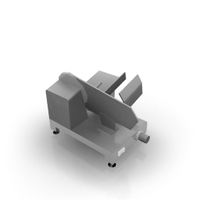
Device 3D Model
...e 3d model
archive3d
device gear
device - 3d model (*.gsm+*.3ds) for interior 3d visualization.
turbosquid
$24

ICG Device
...turbosquid
royalty free 3d model icg device for download as on turbosquid: 3d models for games, architecture, videos. (1692389)
3d_export
$5
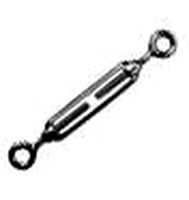
rope tighten device
...rope tighten device
3dexport
rope tighten device
3d_export
$5

front clamping device
...front clamping device
3dexport
front clamping device
archive3d
free

Device 3D Model
...e3d
device kitchen ware
device n130208 - 3d model (*.gsm+*.3ds) for interior 3d visualization.
Angle
design_connected
$25

Angle
...angle
designconnected
flou angle sleep furniture computer generated 3d model. designed by rodolfo dordoni.
3ddd
$1

FLOU / Angle
...flou / angle
3ddd
flou
кровать flou angle. все карты процедурные.
3ddd
free

Кровать ANGLE flou
...le , flou , постельное белье
кровать angle flou
design_connected
$16
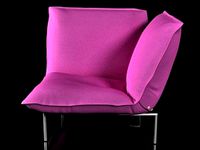
Calin Angle
...calin angle
designconnected
ligne roset calin angle computer generated 3d model. designed by mourgue, pascal.
3d_export
$5

angle grease nipple
...angle grease nipple
3dexport
angle grease nipple
3ddd
$1

Двуспальная кровать Angle
...ngle. двуспальную кровать с подъемным механизмом angle оценят и те, кто любит практичность: кровать имеет объемый ящик для белья.
turbosquid
$10

Angle Wardrobe
...e 3d model angle wardrobe for download as obj, fbx, and blend on turbosquid: 3d models for games, architecture, videos. (1301544)
turbosquid
$9

Angle Stool
...y free 3d model angle stool for download as max, skp, and skp on turbosquid: 3d models for games, architecture, videos. (1694318)
3d_export
free

angle bracket
...t 3d model part. it is the combination of a bra and ket (bra+ket = bracket) which represents the inner product of two functions.
turbosquid
$6

Angles Pouf
...e 3d model angles pouf for download as max, max, fbx, and obj on turbosquid: 3d models for games, architecture, videos. (1577097)
Measuring
3d_export
$5
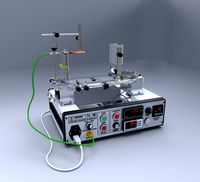
measuring instrument
...measuring instrument
3dexport
measuring instrument
3d_export
$10
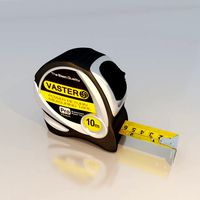
measuring tape
...ng tape
3dexport
measuring tape 3dmodel includes all materials , texture and lighting ,3dmax , 3ds , obj , dw. rendererd by vray
turbosquid
$15

Tape Measure
...uid
royalty free 3d model tape measure for download as blend on turbosquid: 3d models for games, architecture, videos. (1700720)
turbosquid
$5
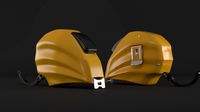
Tape measures
...quid
royalty free 3d model tape measures for download as max on turbosquid: 3d models for games, architecture, videos. (1319446)
turbosquid
$5

Measuring Cups
... 3d model measuring cups for download as fbx and unitypackage on turbosquid: 3d models for games, architecture, videos. (1289678)
turbosquid
$3

Measuring Spoons
...d model measuring spoons for download as fbx and unitypackage on turbosquid: 3d models for games, architecture, videos. (1289679)
turbosquid
$55
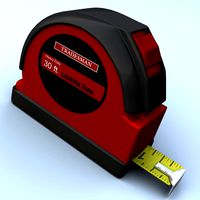
Tape Measurer
... available on turbo squid, the world's leading provider of digital 3d models for visualization, films, television, and games.
turbosquid
$39

Tape Measure
... available on turbo squid, the world's leading provider of digital 3d models for visualization, films, television, and games.
turbosquid
$39
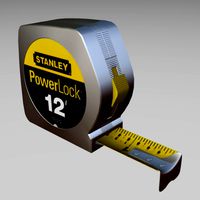
Tape Measure
... available on turbo squid, the world's leading provider of digital 3d models for visualization, films, television, and games.
turbosquid
$32

Tape Measurer
... available on turbo squid, the world's leading provider of digital 3d models for visualization, films, television, and games.
